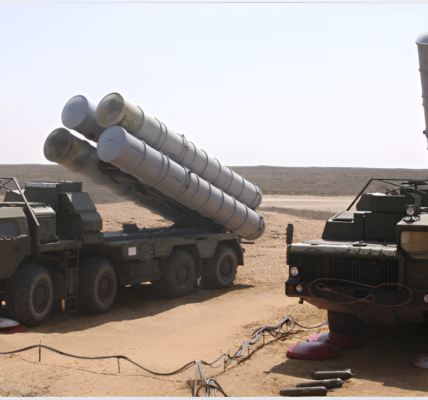
The conflict over Ukraine’s skies is eerily reminiscent of World War I’s Battle of the Somme. In those early days, fighters scrambled in the skies above Kyiv, but today, the air war has become a stalemate. Neither Russia nor Ukraine is attempting to breach the other’s airspace. Both sides are deterred by dense networks of surface-to-air missiles and defensive fighters. An aerial “no-man’s-land” has emerged, where combatants trade long-range strikes and engage in low-altitude duels along the frontlines, but neither side has the power to dominate the skies.
Despite the deadlock, both sides persist with aggression. Ukraine continues to lobby for Western airpower support, while Russia fields new fleets of Iranian drones. Air defense systems are a major component of the ongoing international aid to Ukraine, while Russia leverages its stockpiles of long-range weapons. The stalemate, however, illustrates the crucial strategic importance of the air fight—each new move from one side is swiftly countered by the other. The airspace may be frozen, but both sides recognize that the stakes are too high for either to relinquish control.
Imagine the fallout if one side were to break through. Critical Western supplies to Ukraine arrive by road and rail through Eastern Europe. If Russia were to gain air superiority, these vital convoys would be prime targets, leaving Ukrainian forces vulnerable. Meanwhile, should Ukrainian attack aircraft gain the upper hand, Russian supply lines could be cut off, crippling their artillery and armored forces. The air battle may seem like a stalemate, but it is a war of vital importance, where neither side can afford to lose.
The Strategic Importance of Stalemate
It is important to understand that a stalemate is not a sign of irrelevance—it signals just how crucial the aerial domain has become. From the outset, Ukraine worked relentlessly to deny Russia air superiority. This was vital to their initial success around Kyiv, the defense of the East, and subsequent breakthroughs in Kharkiv and Kherson. Yet maintaining this equilibrium comes at a high cost, requiring extraordinary bravery from Ukrainian forces and continuous support from international partners.
Drawing from history, the trench warfare of World War I might appear stagnant at first glance, but it sparked battlefield innovation. Both the French and British developed tanks, while the Germans honed their Stormtrooper tactics, all of which would shape future conflicts. Similarly, Ukraine has pioneered ingenious tactics and forged effective international partnerships, such as the deployment of MiG-29s armed with High-speed Anti-Radiation Missiles (HARM). Russia, in turn, has dug deeper into its weapons stockpiles, repurposing old inventories to sustain its efforts.
This is the essence of operational design—knowing where you must win and where you must deny victory. In an era of aerial stalemate, the United States and its allies must adapt. Instead of assuming control over the airspace, they should focus on preventing adversaries from gaining it at critical junctures. A strategy of denial, applied with precision and flexibility, can be just as decisive as outright air superiority.
The Air Campaign: All Domains Matter
The dynamic over Ukraine’s skies is a reminder that the air campaign is not confined to the air domain alone. The United States and its allies cannot afford to view air superiority as a given. When confronting an adversary with comparable or superior air forces, it is imperative to integrate other domains into the overall air campaign. The success of Ukraine’s air strategy lies not only in direct combat, but in leveraging all available domains—air, space, cyber, and even maritime.
Ukraine’s use of air, space, and cyber capabilities to target Russian supply depots and missile sites has been highly effective. They have managed to neutralize critical nodes in Russia’s infrastructure, severely limiting the effectiveness of Russian artillery. Ukraine’s defensive counter-air strategy, which includes blending air and surface-to-air fires, has successfully maintained air denial—a major accomplishment given their numerical and technological disadvantages.
There are strong historical parallels here. During World War II’s North African campaign, the Royal Air Force fought a technologically inferior Luftwaffe by targeting key resources on the ground through covert raids. Similarly, modern-day Ukrainian forces are utilizing a blend of joint capabilities to achieve tactical success, despite being outmatched in the air.
The key takeaway for U.S. and allied planners is clear: integrate and adapt. This means developing advanced Joint All-Domain Command and Control (JADC2) systems and ensuring that exercises enhance interoperability. The U.S. and allied forces must reinforce their dominance in the air while finding ways to help ground and naval forces gain the upper hand at decisive moments.
Defense is Just as Crucial as Offense in Airpower
Historically, airpower has been viewed through the lens of offensive action, with General “Hap” Arnold’s famous saying, “offense is the essence of airpower,” serving as a guiding principle for the U.S. military. However, in many conflicts, including the Russo-Ukrainian War, defensive strategies may be just as vital.
Ukraine has adopted a largely defensive air campaign, focused on denying Russian air superiority rather than attempting to conduct large-scale strikes on enemy airfields. This “strategy of corrosion” has proven effective in thwarting Russia’s ability to wage the kind of brutal bombing campaigns it carried out in Syria. Ukraine’s strategy has prevented Russian forces from achieving air dominance, keeping the humanitarian impact of Russian bombings in check.
Historical precedents, such as the Battle of Britain, offer valuable lessons. The Royal Air Force, although outnumbered, focused on eroding German airpower through disciplined, attritional tactics. By avoiding direct confrontations, they inflicted damage on German formations without risking catastrophic losses. In doing so, they eventually depleted the Luftwaffe’s ability to sustain its operations, securing Britain’s victory.
The same principle applies today, particularly in regions like Taiwan or the Baltics, where smaller nations could face aggression from larger neighbors. A defensive air campaign—focused on air denial rather than dominance—could slow or even stop an invader, buying time for ground and naval forces to take action.
Conclusion: A Defensive Success with Far-reaching Implications
Ukraine’s air campaign has been a masterclass in defensive airpower, with lessons that resonate for future conflicts. By integrating multiple domains, utilizing all available assets, and maintaining a strategy of corrosion, Ukraine has succeeded in preventing Russia from gaining air superiority. The battle in the skies may not be over, but its lessons are clear: air denial is a powerful tool, and defensive strategies can be just as critical as offensive ones.
For U.S. and allied planners, this provides a crucial insight: air campaigns of the future may require flexibility, ingenuity, and a broader approach that transcends traditional air operations. As the war in Ukraine continues to unfold, the principles of air denial, cross-domain integration, and defensive airpower should be central to military thinking and investment, preparing forces for the challenges of tomorrow’s conflicts.



